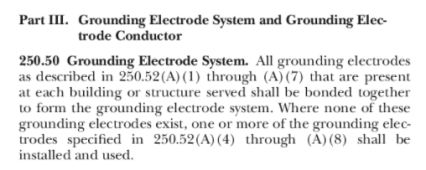HighTechLab
AKA Dexter - CTO of Current Connected, LLC
- Joined
- Sep 23, 2019
- Messages
- 1,672
Full stop - Big issue here.
Adding a second grounding electrode for the separately derived system, not bonded to the buildings ground system and calling it good is not acceptable.
Per 2020 NEC 250.50 all grounding electrodes at a building or structure shall be bonded together.
This code language very specifically says, they "SHALL be bonded".

Also, a big issue is that if the autotransformer breaker trips, neutral is gone and all devices are fried. If you have a 100a service feeding the transfer switch, then to the critical loads panel, it is trivial to have over 25a of neutral current. This is why NEC defines the size and ampacity of the neutral conductors and in this system, the neutral should have the same ampacity as the ungrounded conductors, which means your autotransformer is too small.
Adding a second grounding electrode for the separately derived system, not bonded to the buildings ground system and calling it good is not acceptable.
Per 2020 NEC 250.50 all grounding electrodes at a building or structure shall be bonded together.
This code language very specifically says, they "SHALL be bonded".

Also, a big issue is that if the autotransformer breaker trips, neutral is gone and all devices are fried. If you have a 100a service feeding the transfer switch, then to the critical loads panel, it is trivial to have over 25a of neutral current. This is why NEC defines the size and ampacity of the neutral conductors and in this system, the neutral should have the same ampacity as the ungrounded conductors, which means your autotransformer is too small.




